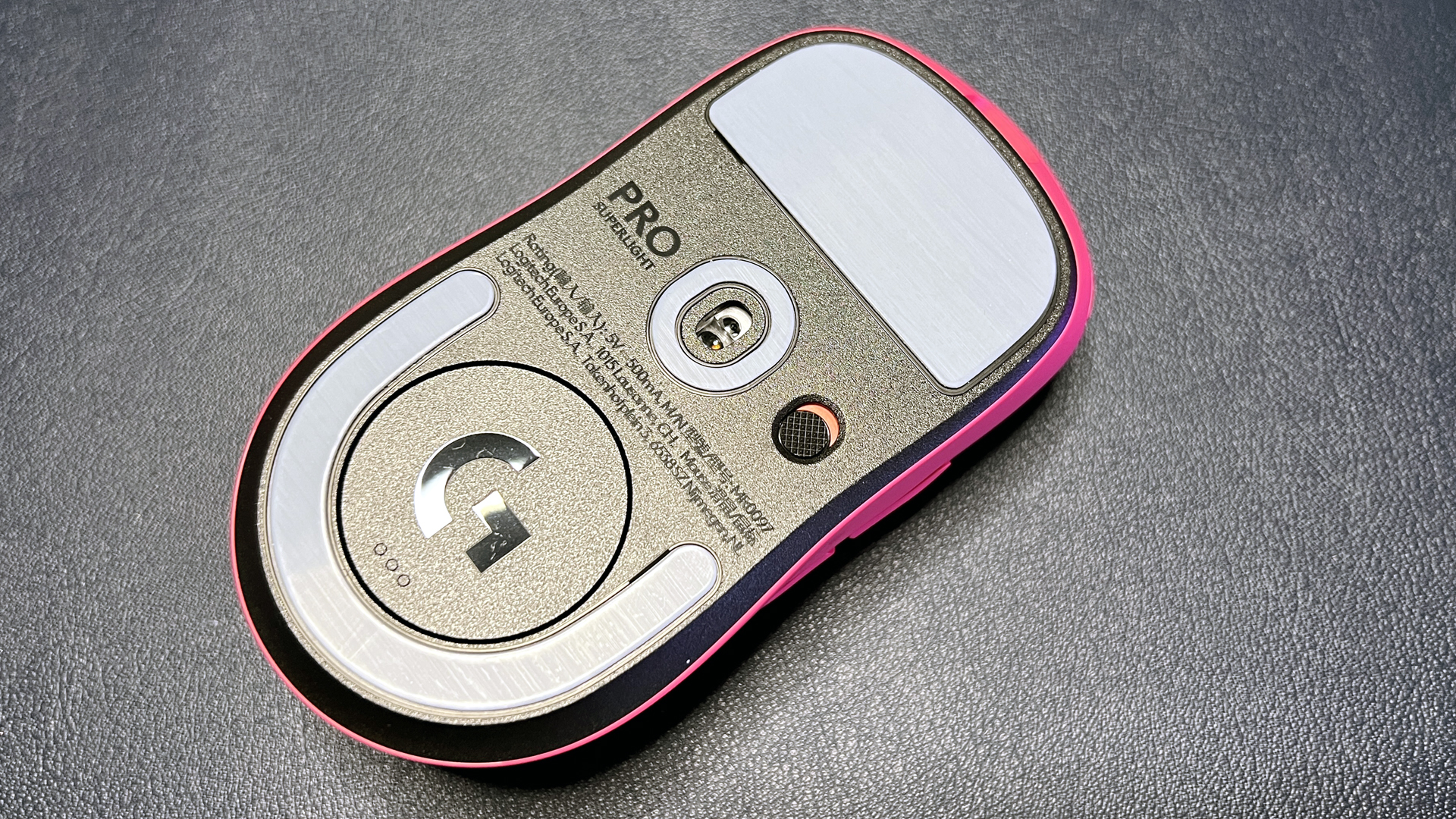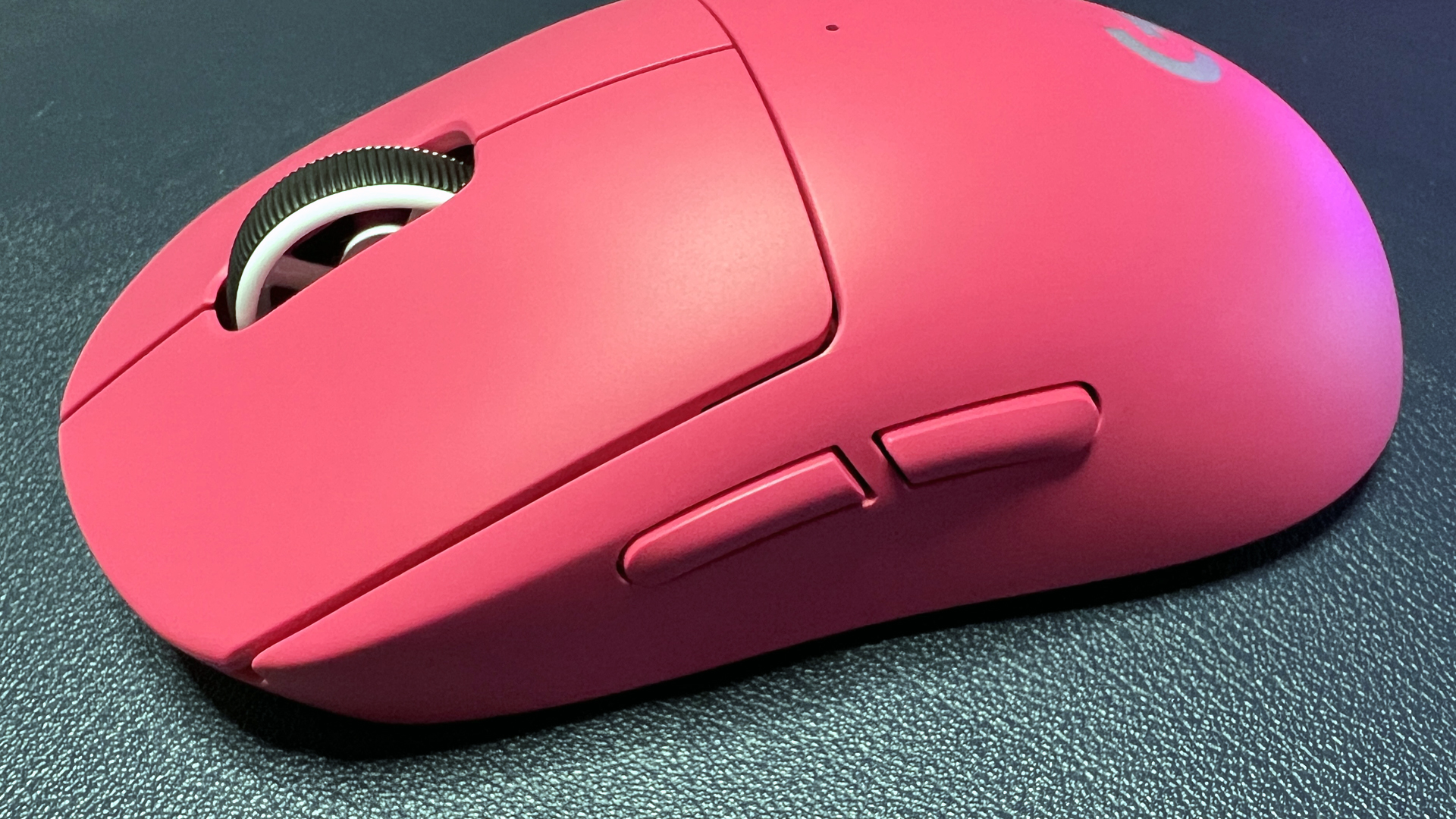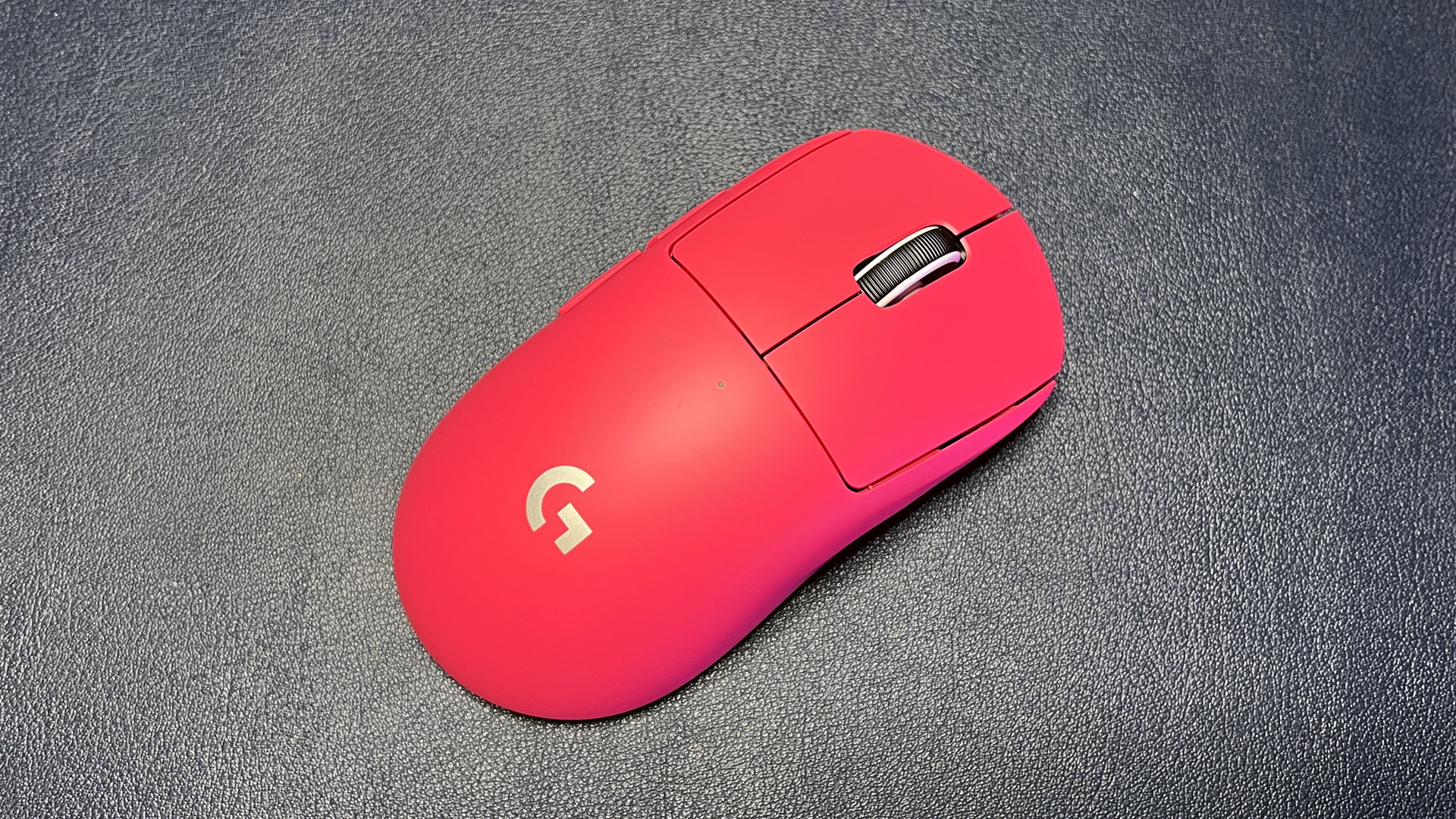Tom's Hardware Verdict
The G Pro X Superlight 2 is very similar to the original G Pro X Superlight — it's probably not worth upgrading, but it's worth it if you're torn between the two.
Pros
- +
Very light
- +
Comfortable for multiple grip types
- +
Smooth, speedy, low-latency
Cons
- -
No DPI switch
- -
Expensive
Why you can trust Tom's Hardware
It's hard to beat a classic. So Logitech didn't even try: The new Logitech G Pro X Superlight 2 is basically identical to its predecessor. And by that, I mean it is identical to its predecessor, at least in size and shape.
It does have some upgrades, however. Logitech's iconic ultra-lightweight wireless gaming mouse now has a USB-C port (frankly, the original G Pro X Superlight also should have had a USB-C port), an upgraded sensor, up to a 2,000 Hz polling rate, and hybrid optical-mechanical switches. It's also ever-so-slightly lighter (like 3 grams lighter) and gets about 25 hours more battery life (though not on the highest-performance, lowest-latency configuration, of course).
The G Pro X Superlight 2 is not exactly revolutionary, but the original Superlight was fantastic and the not-that-different G Pro X Superlight 2 is... similarly, fantastic. Stripped-down, performance-oriented ultra-lightweight gaming mice are not for every gamer (and perhaps not even most), but if that's the type of mouse you're looking for, this is it. The Logitech G Pro X Superlight 2 is available in black, white, and pink for $159.99.
Design and Comfort of the G Pro X Superlight 2
"Don't change what ain't broke" is something Logitech took to heart with the G Pro X Superlight 2 — this mouse is identical, design/form-wise, to its predecessor, the G Pro X Superlight. It's a simple, streamlined, pseudo-ambidextrous five-button gaming mouse with Logitech's G logo printed in silver on the hump and "SUPERLIGHT" printed along the lower right side. Its lightweight plastic chassis comes in three colors — black, white, and pink (our review unit was pink) — and has a smooth, matte finish that does an acceptable job of resisting fingerprints.
It probably won't surprise you to learn that the G Pro X Superlight 2 sports the same measurements as its predecessor, since it is, after all, identical: 4.92 inches (125mm) long by 2.5 inches (63.5mm) wide, and 1.57 inches (40mm) tall. It is ever-so-slightly lighter, however — the original G Pro X Superlight weighed "less than 63g," according to Logitech (though our review unit weighed 2.12oz / 60g). The G Pro X Superlight 2 is rated just a touch lighter at 2.12oz / 60g; our review unit weighed 2.1oz (59.5g). While it's not the absolute lightest gaming mouse you can buy — there are a handful of mice that come in under 60g, such as the Asus ROG Harpe Ace Aim Lab Edition (1.9oz / 54g) and the wired HyperX Pulsefire Haste 2 (1.87oz / 53g) — it's very, very close.
The G Pro X Superlight 2 has the same pseudo-ambidextrous design as the G Pro X Superlight — a symmetrical shape with two thumb buttons on the left side. The sides are pinched-in slightly, with a very subtle ridge for grip. I didn't find grippiness to be much of an issue with the G Pro X Superlight 2, despite the mouse's relatively smooth finish — it's light enough and small enough that picking it up was never an issue. But I also don't really sweat; I can see this mouse becoming pretty slippery if you do have sweaty hands, and Logitech includes optional grip tape in the box if you need more friction.
The G Pro X Superlight 2 looks so much like its predecessor that the only easy way to tell the difference is by looking at the mouse's charging port — the G Pro X Superlight 2 features a USB-C port, while the original G Pro X Superlight was still rocking a Micro-USB port (despite coming out around the end of 2020, when USB-C was already pretty common).
Get Tom's Hardware's best news and in-depth reviews, straight to your inbox.




The bottom of the mouse also looks very similar, though not identical, to that of its predecessor. It has PTFE mouse feet — a large block at the top, a ring around the sensor, and a u-shaped piece around the mouse's magnetic puck. The puck can be switched out for a PTFE-covered alternate (included in box) for extra glide, or for a Logitech Powercore module for use with the brand's Powerplay wireless charging mouse pads. I guess you can also remove it completely to shave off another half of a gram or so.


Also on the bottom of the mouse is a simple power switch — like other performance-oriented ultra-lightweight wireless gaming mice, the G Pro X Superlight 2 doesn't have Bluetooth — just low-latency 2.4GHz wireless connectivity.
The mouse comes with a 6.2-foot (1.9m) rubber USB-C to USB-A charging cable, which is reasonably flexible but offers a little too much drag and resistance for comfortable wired play — especially with a mouse this light. Also in the box are a 2.4GHz wireless USB-A dongle, a USB extender, an alternate PTFE-covered mouse puck, and optional grip tape.
Specs
| Sensor Model | Hero 2 |
| Max Sensitivity | 32,000DPI |
| Max Speed (IPS) | 500IPS |
| Max Acceleration | 40Gs |
| Polling Rates | 2000 / 1000 / 500 / 250 / 125 Hz |
| Programmable Buttons | 5 |
| LED Zones | 0 |
| Cable | USB-C to USB-A |
| Connectivity | 2.5GHz wireless, wired (USB-C) |
| Measurements (L x W x H) | 4.92 x 2.5 x 1.57 inches / 125 x 63.5 x 40mm |
| Weight (excluding cable) | 2.12oz / 60g |
| MSRP / Price at Time of Review | $159.99 / $159.99 |
| Release Date | Sept. 5, 2023 |
Performance of the G Pro X Superlight 2
One of the most notable improvements in the G Pro X Superlight 2 is Logitech's new Hero 2 sensor, which has a maximum sensitivity of 32,000DPI, a maximum speed of 500 IPS, and can handle "more than" 40Gs of acceleration. The mouse also supports a polling rate of up to 2,000 Hz (the original G Pro X Superlight maxes out at 1,000 Hz) and features Logitech's new Lightforce hybrid optical/mechanical switches.


The switches are, as you may have gleaned from the name, hybrid switches that are both optical and mechanical, giving you the speed of light-based actuation with the more satisfying feel of a mechanical click (or something like that). The buttons on the G Pro X Superlight do have a slightly heavier click than I'm used to feeling on gaming mice these days — I liked the way it felt, but I'm not sure everyone will, especially if you're looking for speed above all else. Apparently the hybrid nature of the switches means they can actuate both optically and mechanically. For the fastest, lowest-latency performance, you'll want to stick with optical, but the mouse also has a power saving mode that uses mechanical actuation.
The G Pro X Superlight 2 is the perfect mouse for first-person shooters and anything where speed is a priority — it's the iconic ultra-lightweight mouse. Its body is small enough that I didn't have a problem using it in a fingertip or a claw grip, even though I'm usually a palm-gripper. The new Hero 2 sensor did a great job of tracking my aim in CS:GO and Overwatch 2 (and I'm pretty out of practice with first-person shooters these days, because I still cannot stop playing Baldur's Gate 3). This is just one of those mice that my hand can't help but seek out — I've found myself reluctant to switch back over to my current daily driver, the Razer Naga V2 Pro (but I have to, because I'm the kind of person who needs double-digit buttons on every peripheral).
Features and Software of the G Pro X Superlight 2
The G Pro X Superlight 2 ships with five preset DPI levels (800, 1200, 1600, 2400, 3200), but doesn't have a dedicated DPI switch — so you'll need to download Logitech's G Hub peripheral software to change the default DPI of 800, at the very least. While you've got G Hub open, you can also remap buttons, change the mouse's polling rate (1,000 Hz default, which can be upped to 2,000 Hz), and save profiles (up to five) directly to the mouse's onboard memory.



Logitech's G Hub software is not particularly intuitive and is unnecessarily convoluted, especially the button-mapping feature, but luckily the G Pro X Superlight 2 is pretty basic in terms of customizability.
One thing that is frustrating is the mouse's lack of a dedicated DPI switch, which means you'll either have to (a) switch DPI manually using unintuitive, convoluted software or (b) reprogram one of the mouse's five buttons to act as a dedicated DPI switch. If you have another Logitech peripheral with programmable buttons, you can also reprogram one of those buttons to act as a dedicated DPI switch, and if you know exactly what DPI you need in various programs you can set up program-based profiles in G Hub. But the point, of course, is that while many, many mice have dedicated DPI switch buttons, the G Pro X Superlight 2 notably does not.
Wireless Experience & Battery Life of the G Pro X Superlight 2
Logitech rates the G Pro X Superlight 2's battery life at 95 hours — 25 hours longer than the original G Pro X Superlight's 70-hour rating. This is on par with other ultra-lightweight flagship gaming mice — both Razer's DeathAdder V3 Pro and Asus' ROG Harpe Ace Aim Lab Edition get about 90 hours on a full charge. The G Pro X Superlight 2's 95 hours assumes, of course, that you have the power saving (hybrid switch mode) turned on and the polling rate set to 1,000 Hz — turning power saving off drops the battery life estimate down to 89 hours, and upping the polling rate to 2,000 Hz drops it down to 51 hours.
Bottom Line
If you loved the Logitech G Pro X Superlight, you'll love the G Pro X Superlight 2, because it's the same mouse, just upgraded into the 2020s. It does, at least, have the same list price ($159.99) as the original, so at least it hasn't gone up in price. Of course, now that the G Pro X Superlight 2 is out, the G Pro X Superlight is cheaper — it's been dipping to around $110 - $125 pretty consistently, and will probably go even lower as we get closer to the holiday season.
The Logitech G Pro X Superlight 2 is a great mouse if you know exactly what you want (and you don't want a lot). If you don't need more than five buttons and you never switch your DPI (or you only switch your DPI for specific programs, like clockwork), and you're looking for a reliable, accurate ultra-lightweight performer — buy this mouse, right now. It's probably not worth upgrading if you're currently using the G Pro X Superlight, but if you've been waiting to pull the trigger then the upgrades in the G Pro X Superlight 2 are solid. But $160 is a lot to pay for a mouse that's objectively pretty basic.

Sarah Jacobsson Purewal is a senior editor at Tom's Hardware covering peripherals, software, and custom builds. You can find more of her work in PCWorld, Macworld, TechHive, CNET, Gizmodo, Tom's Guide, PC Gamer, Men's Health, Men's Fitness, SHAPE, Cosmopolitan, and just about everywhere else.
-
Sleepy_Hollowed It's absolutely bonkers that this device has no DPI button or switch to cycle through by default.Reply
I guess that they're putting everything in software now (I mean, they're not the only ones), but that is absolutely bonkers when almost all competitors do that.



